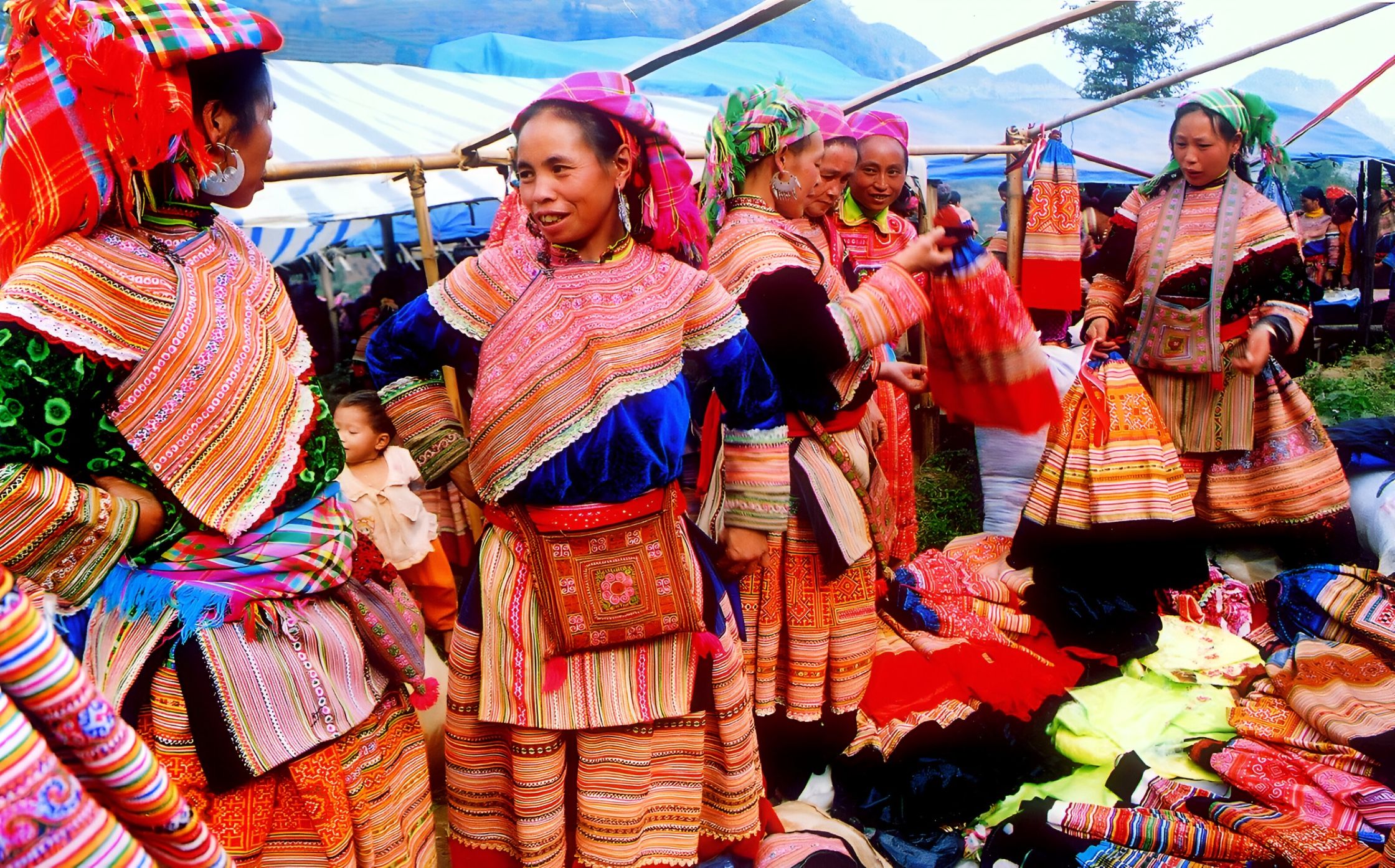What is Vietnam's National Dress, the Ao Dai?
Ao Dai is a long tunic worn over silk pants by both men and women. “áo” means “shirt” and “dài” means “long”.
The áo dài, Vietnam’s traditional dress, stands as a symbol of the nation’s rich history and cultural heritage. Across the country, from Hanoi to Hue, Hoi An to Saigon, people of all ages—men, women, and children—wear the áo dài in a wide range of colors and styles.
Discover Vietnam on your next vacation and explore Halong Bay, Hoi An’s charm and bustling Hanoi, check out Best Vietnam Tours & Holidays
What is Ao Dai, the traditional dress in Vietnam?
The áo dài dress is the Vietnam’s iconic & traditional dress, consists of a long tunic worn over silk or cotton pant. Its high slits and loose-fitting pants designed in a way to ease the both elegance and ease of movement. While the term áo dài literally means “a long shirt,” the high collar on the tunic symbolizes modesty, while the side slits represent freedom and individuality.
The Vietnamese National Dress is always worn over a loose pant, making it modern, stylish and elegant.
Additionally, the Ao Dai can be tailor made from various fabrics, including silk (the most popular one), brocade, an organic cotton, and synthetics. The choice of fabric depends on the occasion and the user budget.
For the Vietnamese Lunar New Year, locals often wear an elegant traditional áo dài while for everyday wear, they typically opt for cotton one.
The Importance of Colors on Ao Dai
According to the Vietnamese culture (when choosing an Ao Dai), colors define a realistic meaning that defines the luck and prosperity. For everyday wear, students wear simple white or blue áo dài dress (choose by school), while on special occasions like Tết Lunar New Year or at a wedding, females usually wear a more colorful, specially red, or light pink.

The Origins & History of Vietnam’s Traditional Dress
The Vietnamese Ao Dai dress has a rich history, with origins dating back to 1744, time of the Nguyen Dynasty when Lord Nguyen Phuc Khoat, known as Lord Vu Vuong, ordered the design for a new style of clothing, featuring long gowns with pants underneath for both men and women.
This style, influenced by the Cham ethnic group (central Vietnam), aimed to show respect and gain their support. During the French occupation in the late 19th century, the ao dai dress evolved further, blending Eastern and Western styles. French tailors reshaped the bodice and neckline, while keeping the loose pants that remain the same to the design we see today.

The Evolution of Ao Dai Traditional Clothing
Evaluation of Vietnam’s National Dress – The ao dai gained popularity in the 1970s, after the reunification of North and South Vietnam, as a powerful symbol of the nation’s identity and resistance. While the male version has stayed relatively unchanged, the female version of Vietnam’s national dress has evolved over the years with intricate designs and varying silhouettes.
History of the Ao Dai, back in the late 1980s and early 1990s, beauty pageants flourished in Vietnamese society, where the ao dai became a defining symbol of cultural expression. The dress also gained international recognition through the Vietnamese diaspora, who shared their traditions worldwide after the conflict.
The ao dai embodies the resilience and strength of Vietnamese women, passed down through generations from grandmothers to mothers and then to daughters. For Vietnamese people, regardless of their city of birth, this traditional dress carries the stories and memories of the past while preserving their cultural identity.







FAQ: Ao Da, national dress of Vietnam
Is the Ao Dai Still Worn by Vietnamese?
Do Vietnamese Wear Ao Dai Today? While less common to see it in Vietnam’s larger cities like Hanoi and Ho Chi Minh City, the national dress remains popular in smaller towns. Professional women in the tourism industry and students frequently wear the ao dai, keeping the tradition alive.
What about other traditional dresses in Vietnam?
Variation of Vietnamese Traditional Dress – The 54 ethnic groups in Vietnam showcase diverse attire, with the ao dai representing the Kinh people, commonly referred to as the Vietnamese.
While some ethnic groups, like the Hmong and Dao, continue to wear their intricately dyed and embroidered traditional garments regularly, others have replaced their cultural attire with inexpensive Chinese-made clothing or Western-style t-shirts.

What is the meaning of Ao dai?
What does the AO Dai symbolize?
How much does an Ao Dai cost in Vietnam?
What to wear under Ao Dai?
Tips for Wearing Ao Dai in Vietnam – To wear the dress gracefully, choose a specially designed bra that shapes your upper body. Vietnamese women often pair the ao dai with brightly colored underwear to complement the dress.
How do I choose Ao Dai?
What is a male ao dai called?
The Ao Gam is the male counterpart. Found throughout Vietnam and in overseas Vietnamese communities, the ao dai is a significant cultural symbol.
What is the difference between ao dai and qipao?
One is Chinese while the other is Vietnamese. The Cheongsam, also known as the Qipao, is a traditional Chinese dress with a long history in Chinese culture, popularized in the early 20th century. In contrast, the Ao Dai, the national Vietnamese dress, has symbolized Vietnamese culture for centuries and is often associated with grace and elegance.
What is the English name for ao dai?
Áo dài translates as long shirt and the term can also be used to describe any clothing that include a long tunic.
What shoes do you wear with ao dai?
Pointed toe shoes are the best shoes to wear together with traditional dress and it become most stylish with the heel as high as 3 to 5 centimeters. Besides, if you are not used to wearing heels, you can also change to square heels shoes, both works fine.
How do you pronounce ao dai in Vietnamese?
Simply pronounce it as “Ao Zai” in Hanoi and northern Vietnam and “Ao Yay” in Ho Chi Minh City & southern Vietnam. Any of these terms are correct and locals understand it well. To know more, check it out on wikipedia




